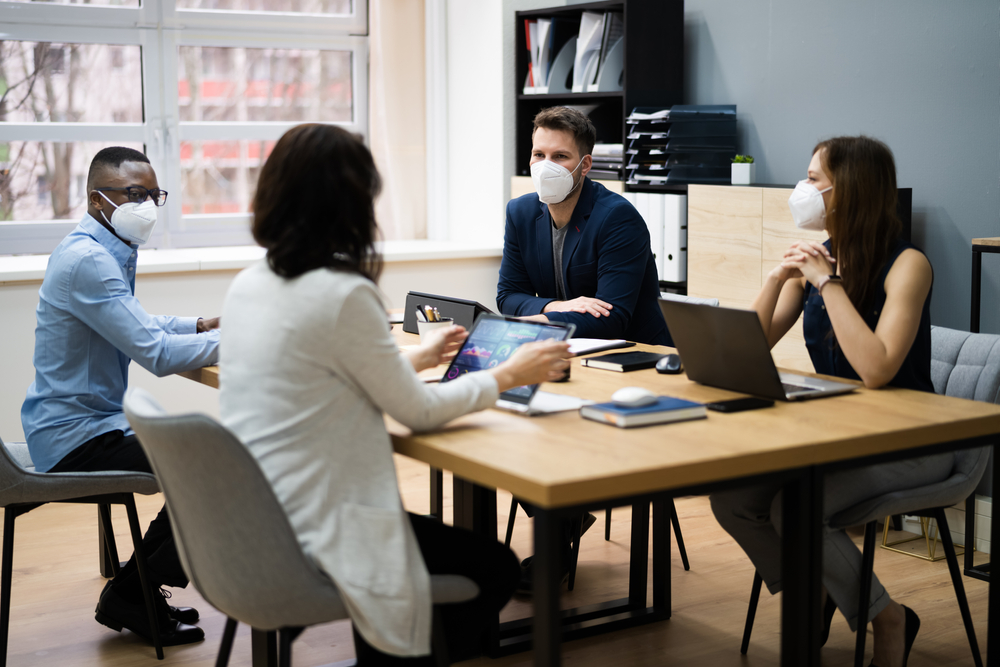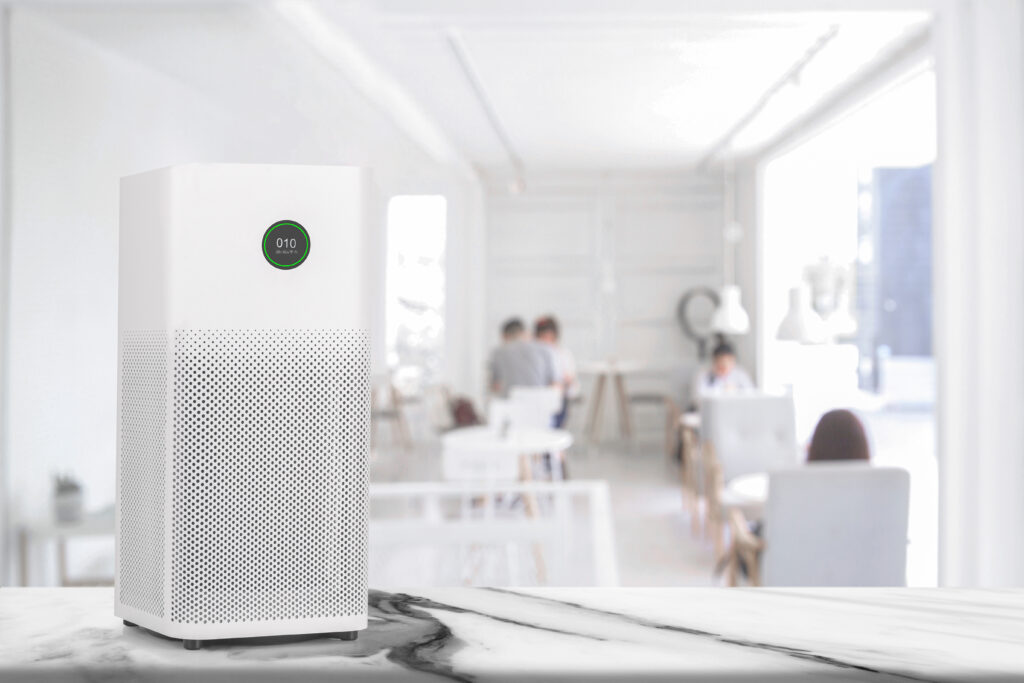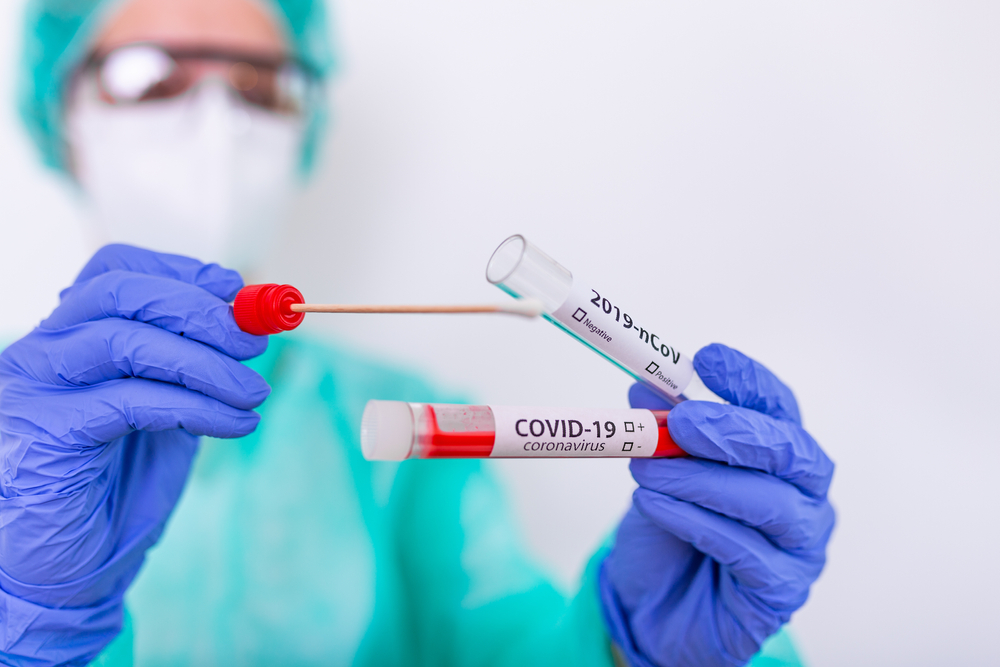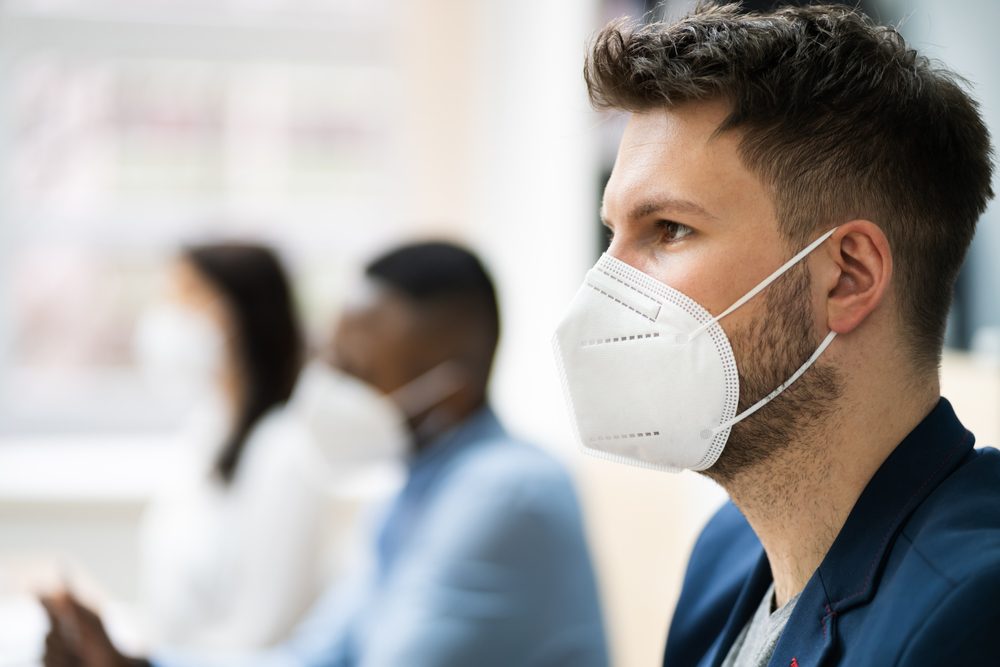Guidelines for Universities
Intended Audience
- University administration and advisory/governing boards
- University faculty, staff, and other employees
- University employee union representatives
- University students and their parents, other family members, and friends
- Businesses located on university campuses
- Campus community members
- Educational policy makers
- Elected officials
Rationale
Universities have a unique opportunity to provide leadership and models of safe operation in the COVID-19 pandemic. Universities also have a responsibility to protect their staff, students, and the surrounding community from COVID-19 transmission.
Universities have substantial resources available not only to support, but also to be proactive in developing a rational approach to reopening that provides transparency so that students, staff, parents, and other stakeholders can make informed decisions and provide feedback into the plan. The information and tools used in decision making, including assumptions, supporting evidence, and any resulting risk estimates should be made publicly available. In documenting the decision-making process, universities are encouraged to consult with their own faculty and staff with expertise in relevant areas of study and to collaborate with external experts as needed. Such work could lead to scholarly publications and ongoing collaborations, which would be valuable to the contributors and to the university in future preparedness efforts.

The effective COVID mitigation practices outlined in this document aim to create a low-transmission zone for the university students and staff within potentially higher or uncontrolled transmission communities, which will help lower the risk of in-person activities.
For students and employees, COVID-19 infection poses significant risks, both during immediate infection and long term. Long COVID consists of persistent or new chronic symptoms more than 4 weeks following COVID infection, and is associated with organ damage in the lungs, brain, heart, kidneys and other organs. Organ damage with significant health impacts, including loss of IQ, occurs even without self-reported Long Covid symptoms. Long COVID can occur in those with mild symptoms in the acute phase of the illness, vaccinated individuals, and people who are young and otherwise healthy. From an ethical perspective, the projected benefits of in person activities over their virtual alternatives must be tempered by the acute and long-term risks to individual participants, their families, and the broader community.
These best practices are intended to be implemented with the input of all people whose activities put them at risk in the campus community. Plans should be implemented with flexibility to allow for individual variation in risk tolerance, whether that is due to personal medical conditions, high risk family members, or personal choice. Significant efforts should be made to accommodate students and staff who request continued remote work, for example.
The practices below are offered in the midst of the surge predominated by the Omicron variant, along with ongoing transmission of the Delta variant. As evidence evolves and the current surge subsides, we aim to provide updated guidance. It is important to recognize that while achieving sustained low levels of COVID-19 on campus may allow relaxation of some mitigation measures, it will be important to keep a number of effective mitigation strategies in place to maintain those low levels. Relaxation of all mitigation strategies will undoubtedly lead to a resultant rise in cases, if COVID is present within the campus and surrounding community. During times of low COVID activity, larger projects to improve airborne transmission mitigation such as ventilation system upgrades should be considered to prepare for future outbreaks (new SARS-CoV-2 variants or other outbreaks).
Best Practices
Mitigate airborne disease spread through masking, ventilation and filtration
- Recognize and communicate to the campus community that COVID is airborne.
- Prioritize remote work and remote instruction during the current/future outbreaks.
- Promote appropriate use of PPE for students, faculty, and staff, including high filtration masks (N95, KN95, or equivalent masks from a reputable source), and eye protection.
- Enhance mechanical ventilation to exceed minimum requirements, notably by reducing recirculation of air and increasing ACH (Air change per hour), where possible and use at least MERV 13 filters, as recommended by ASHRAE (https://www.ashrae.org/technical-resources/resources). Maintain a minimum level of ventilation continuously, even when the space is unoccupied for some period of time.
- Utilize natural ventilation, i.e. outdoor air (such as opening windows to allow cross-ventilation) when possible while Mechanical ventilation is limited to improve Indoor Air Quality, including consideration of outdoor classroom spaces. Avoid the use of rooms for groups of people where mechanical ventilation is deficient or absent while it’s not possible to complement with natural ventilation.
- Enhance air quality with HEPA filtration to reduce risk where needed per these instructions: FAQs on Protecting Yourself from Aerosol Transmission (see section “How do I select the right HEPA air cleaner? (or fan-filter cleaner)”).
- Provide and encourage students and faculty to acquire and use personal HEPA air cleaners, including portable ones, which are a low cost and convenient way to provide an extra level of protection for home, travel, special conditions, as well for University settings.
- Impose elevated standards for ventilation and HEPA filtration for frequently shared spaces (classrooms, lounges, high occupancy hallways) or adjacent rooms with connecting air flows (dorms) and restrooms where toilet flushing can cause aerosolization.
- Inform students, faculty, and staff on how best to utilize portable HEPA filters when in-person interactions cannot be avoided.


Case identification and testing
- Educate students, faculty and staff about diverse COVID-19 symptoms and monitoring.
- Create a system of symptom surveillance and reporting for students.
- Encourage quarantine if symptoms are present in the absence of a positive test result.
- Provide access to at-home and on-campus rapid testing in addition to surveillance PCR testing for each member of the university community (on-campus and/or by Public Health Authorities). Educate students, faculty, and staff on test result interpretation and provide internet based and contact information for resources to address questions about testing and test results.
- Optimize COVID mitigation at test sites including utilizing outdoor walk up and/or drive through locations, providing home collection kits with on-campus drop off, separating asymptomatic from symptomatic testing locations, and maximizing ventilation/filtration if indoor testing must be conducted.
- Mandate increased frequency of testing (twice daily) for those with significant contacts with the broader community (physicians, health professionals or students in medical settings, students employed off campus or living with community members, those in households whose members interact with others of greater exposure, practicum students, veterinary students with patient contact, etc.). If rapid at-home tests are not available for testing twice per day, secure alternative daily testing (PCR, RT-LAMP) and with timely reporting of results.
Contact tracing, isolation and quarantine
- Use contact tracing to quickly identify and quarantine contacts of confirmed cases. Enforce compliance to contact tracing efforts.
- Broaden contact tracing definitions to account for airborne spread of COVID-19 and increased transmissibility of recent variants (Delta and Omicron).
- If possible, designate buildings for quarantine/isolation to limit transmission and establish protocols for transferring COVID-positive individuals and their contacts to quarantine housing. Provide guidelines for disinfection of common areas of shared housing frequently (several times/day). If a student co-inhabits a residence with an infected individual, clearly mark areas that are associated with healthy and sick individuals, place additional HEPA air filters at boundaries to prevent cross air flow and in common areas, and encourage non-synchronous use of common areas, thorough disinfection of shared spaces and appliances, and mask wearing at residences.
- Provide support and infrastructure for essential needs (food, medications, laundry, medical and mental health assistance, child and pet care, appropriate accommodations for people with special needs) for those in isolation to enable more rapid recovery, and limit opportunities for further transmission.
- Provide social and psychological support for individuals in isolation and quarantine via internet- or phone-based resources.
- Specify criteria for terminating isolation*: 14 days + negative test or two negative tests, at least 48 hours apart. Do not allow early isolation exit even in the absence of symptoms without two negative test results, 48 hours apart.

Meeting and access strategy
- Limit the number of people working simultaneously (e.g. in lab settings, staggered rotation/ morning-afternoon shifts).
- Don’t allow group meetings in rooms where ventilation is deficient or absent, and without windows (or with windows that do not open), and without high efficiency air filtration (portable HEPA air cleaner, or MERV-13 or better unit).
- Establish attendance limits for gatherings of all types that occur on campus.
- Restrict access to campus buildings to individuals who are in compliance with vaccination, testing, and symptom monitoring requirements.
- Provide access to and recommend or require up-to-date vaccination (2-dose series plus boosters as recommended within the ACIP/CDC timeframe) status for all students and staff.
- Provide a 14-day period of quarantine* or twice daily testing for new arrivals to campus or for returning campus members who have been traveling.
- Provide pre-departure testing for anyone leaving campus, and guidance about safe travel practices. Advise those who travel to take a rapid test upon arrival and again 48 hours post-arrival. Encourage them to be socially conservative during this period until testing indicates absence of infection during travel.

*The standards for the duration of quarantine for those who might be infected and isolation for those who are confirmed to be infected are derived from our current knowledge about the period of incubation (the period between exposure and the appearance of symptoms) and the period of infectiousness (the duration for which a person confirmed to be positive for COVID-19 is capable of transmitting the disease to others).
Quarantine: The incubation period must inform the duration of quarantine since transmission occurs before symptoms begin, and tests are not positive until just before symptoms begin.There is a wide range (2-14 days) within which incubation ends and transmission can start. The alternative strategy of twice daily testing carries more risk, but can be considered due to the difficulty of imposing quarantines. Diligence in testing is essential.
Isolation: Once someone tests positive the duration of infectiousness is also likely to be less than 14 days. Limited data suggests it might be shortened to 10 days. Substantial evidence tells us it should be no shorter than 10 days. Campus policies might consider a minimum isolation time between 10 and 14 days, but careful guidelines for limiting contact with others during this period should be specified if this is done.
The purpose of isolation and quarantine is to limit exposure to others who are likely to acquire the virus from the infected individual within these windows of time. Because of the impossibility to specify for each case precisely where a person is with respect to their ability to transmit the virus or begin to show symptoms, and due to the large magnitude of the potential consequences for the health and well-being of those who might become infected during this period, the reasonable approach is also the safest: a 14-day quarantine and isolation periods, with two negative tests separated by 24 hours prior to exiting. The likelihood of transmission beyond this point is significantly reduced.Universities and colleges have been open about prioritizing the health and safety of their community members. To honor this commitment, each institution would have to rely on the best guidelines suggested by scientific data to date. Data support a period of quarantine and isolation no shorter than 14 days to guarantee that further transmission by an infected individual is minimized, and that the safety and integrity of the community are preserved.
Develop special facility and activity protocols
- Develop written protocols for location, density, ventilation or air filtration and staff support for special facilities and activities.
- Designate Covid safety coordinators for each type of activity with training on transmission and prevention.
- Provide workplace protocols for staff including symptom screening, testing, masking and distancing.
- Campus transportation – where buses, taxis, car rides, or other shared transportation are used for on-campus transportation, protocols for safety including ventilation, mask wearing and portable HEPA purifiers should be observed.
- Food and Dining – provide flexible food services with delivery, pickup, outdoor settings, and carefully designed low density indoor conditions where necessary.
- Sports – sporting activities and events can be highly susceptible to outbreaks, as seen in professional sports leagues (https://www.cnbc.com/2021/12/15/nfl-and-nba-lead-new-covid-outbreaks-in-sports.html). Where possible, replace indoor with outdoor activities, reduce physical contact, reduce attendance, reduce density by extending hours, drastically reduce reliance on shared changing and showering facilities. Sports that can be conducted with layered mitigation measures in place may be considered to continue in person. Player activities and in person spectators should be limited in accordance with general gathering limits. Virtual spectation is recommended.
- Choir, social and religious gatherings, especially where singing occurs, are particularly known to produce aerosols that transmit covid resulting in superspreader events. Virtual options as well as specially designed facilities for outdoor, or indoor well distanced gatherings, should be provided and density, ventilation, masking and other guidelines should be followed.
- Other academic and non-academic gatherings – Study groups, band, theater, clubs, and other student organizations should be performed virtually where possible and follow guidelines for social gatherings where in person meetings are necessary.
- Non-academic gatherings (social, religious, and others) should follow guidelines regarding social gatherings and strongly consider a remote alternative to curb the spread of COVID-19
- Conduct campus tours for prospective students virtually, self-guided (outdoors) or student/staff guided (outdoors with masks and distancing). Consider a hybrid virtual and real campus tour approach to give a more complete picture of campus life when modifications are needed.
- Tutoring and mentorship services – should be done virtually whenever possible.
- Programs associated with elevated in-person interactions (hotel and hospitality) must be accompanied by appropriate elevated safety practices, including surveillance, case identification, and frequent testing (twice daily if social contact occurs often).
Maintain essential on-campus operations
- Safely conduct essential activities on campus during outbreaks using optimized mitigation strategies.
- Identify which activities are essential:
- Healthcare, animal care, research relevant to COVID and health.
- Food service for students and employees who must be on campus.
- Facilities and building maintenance.
- Security.
Continue the academic and student life mission of the university
- Provide resources for instructors to enhance remote education
- Match courses with an appropriate safe modality
- Transition lectures and discussions to virtual platforms.
- Identify laboratory courses that can be done virtually/remotely.
- Maximize mitigation strategies for course types that may require in person interaction, including:
- Laboratory courses that are uniquely unable to be accomplished through virtual platforms.
- Clinical practicum placements.
- Clinical skills courses.
- Simulations that require hands on, in person interaction.
- Discretion for flexible teaching for professors, lecturers, and instructors to facilitate safe learning based on considerations of classroom circumstances and student/faculty health.
- Provide virtual options for sharing scholarly and creative works by students, faculty, and staff, as an alternative to in-person conferences/showcases.
- Encourage the development of online, outdoor and other safer recreation, sports, and social activities as part of student life.

Support the broader community to reduce COVID transmission
- Encourage businesses that serve the campus community to enhance mitigation strategies to expand the low-transmission zone.
- Encourage and facilitate community outreach by university students and staff whose normal activities may be disrupted
- Partner with local organizations – suggested ideas: N95 distribution, food pantries, information and other supports for those who are sick and their families.
- Support local and regional hospitals to work toward a return to/maintenance of routine operations, rather than crisis standards of care
- Allow flexible options for degree completion for health professional students, and those in related fields, who may volunteer in COVID relief efforts.
Implement proactive COVID response plans with transparency, ground-up collaboration, and effective communication
- Create a framework of clear science and compassion-motivated policies, effective public communication, incentives, and enforcement that encourages a culture of mutual protection, responsibility, and compliance with COVID mitigation policies.
- Identify higher risk activities to single out for interventions to reduce those risks. Risk calculators are based upon untested assumptions and do not incorporate the need to accumulate risk from many daily individual activities with chance or imperative encounters/events to obtain the risk of ongoing living conditions. Thus, they should not be used to determine allowable risks, but can be used to identify where elevated risks require mitigation. As an example, the Micro COVID project provides a useful framework in estimating risks of activities: https://www.microcovid.org/
- Maintain an up-to-date COVID response website with clear goals, relevant data used in higher-level decision making, and criteria for special actions
- Communicate a summary of relevant updates on at least a weekly basis
- Encourage community discourse and address questions from community member
- Facilitate ongoing collaboration between individuals who work daily to keep the university functioning and policy makers is essential for the best implementation of recommended safety measures.
- Share campus testing data in a timely and open manner.
- Special communication channels should be developed for vulnerable populations in the campus community.

